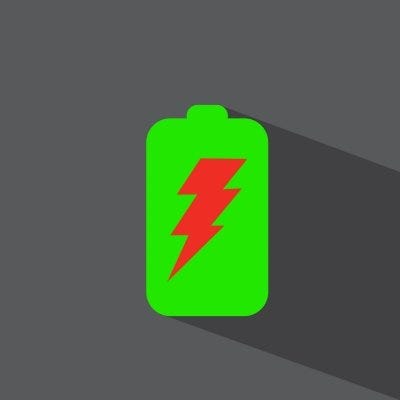Solid-State Batteries Make for Smaller Medical Devices and Fewer Procedures
Solid-state batteries, which are small, efficient, long-lasting, and capable of being recharged remotely, offer advantages for medical devices.
December 4, 2015

Solid-state batteries, which are small, efficient, long-lasting, and capable of being recharged remotely, offer advantages for medical devices.
Dr. Lonnie Johnson

While most people who have had an implant placed into their body are thankful for the medical benefits it provides, they would be equally thankful if the implant were smaller. Add to that the fact that most patients with an implant must undergo another invasive procedure to replace the implant’s battery, and it’s no surprise that they would prefer an implant with a longer battery life or inductive charging of a rechargeable battery to avoid those additional procedures altogether.
Solid-state batteries, which are small, efficient, long-lasting, and capable of being recharged remotely, could be the answer.
Solid-state technology allows for greater energy density than the industry standard. This means the same amount of energy stored in today’s batteries can be stored in a smaller space, ultimately reducing the size of the device. This high energy density allows for microapplications that are critical for medical devices.
Solid-state batteries can also be formed with curvatures to fit most applications, making it easier to design a device to fit anatomical requirements.
Size and shape can be especially important for certain applications, such as those involving the eye and the brain. In ocular applications, pressure gradients around the pupil, better known as ocular hypertension, are a major cause of glaucoma. Using solid-state batteries, an ocular device can be fitted with electronically powered pressure sensors that would allow for continuous monitoring.
Safety is vitally important when batteries are a component of an implanted device. Solid-state batteries contain no liquid or gel electrolytes, eliminating any risk of leakage. In addition, solid-state technology can manage the risk of thermal runaway and prevent batteries from short-circuiting and overheating.
Battery performance relies heavily on parameters like voltage, c-rate, resistance, cycle and service life, temperature, shelf life, safety, reliability, durability, energy density, and specific power. The relationship between these parameters and the specific requirements for a particular application is what makes for a great battery fit. For example, the critical factors in selecting a cardiac pacemaker battery technology are impact response and performance, critical voltage ranges, size and duration of current pulses, as well as service life. Accurate end-of-battery-life predictions are vital. Solid-state technology is designed to last for many years, resulting in a cost-effective, lower-maintenance solution for active implantable medical devices.
Most developers of solid-state batteries are working on rechargeable cells, as these will directly replace the current state of the art for medical devices. Current cutting-edge developments could allow physicians and patients to recharge those batteries remotely. Such an achievement would depend on the strength of the antenna and its ability to sufficiently receive isolated signals within the body cavity. This will significantly reduce or even eliminate the need for patients to undergo invasive medical procedures to recharge batteries, thereby improving patient quality of life and reducing risk to the patient, medical professional, and medical facility.
Solid-state batteries can be a win for all involved.
Learn about the future of flexible, printed, and thin-film batteries for wearables at the MD&M West conference, February 9-11, 2016, in Anaheim, CA. |
Dr. Lonnie Johnson is the CEO and founder of Johnson Battery Technologies.
You May Also Like


